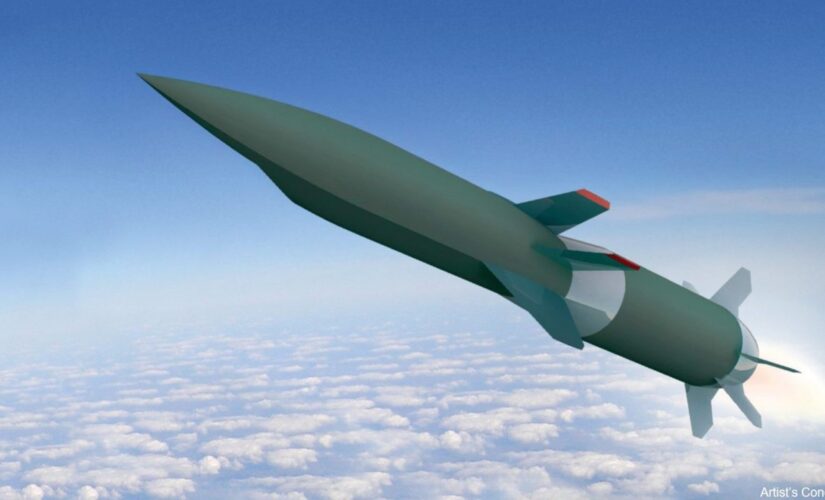NEWYou can now listen to Fox News articles!
The United States announced that they completed their second successful test flight of a hypersonic missile, touting the potential for “next-generation capability” for the military.
The test, conducted by the Defense Advanced Research Projects Agency (DARPA) and the U.S. Air Force, was the first test of the Lockheed Martin version of the Hypersonic Air-breathing Weapon Concept, commonly known as HAWC. An earlier test, configured by a different company, took place in September.
Artist’s concept of Hypersonic Air-breathing Weapons Concept (HAWC) vehicle
(Defense Advanced Research Projects Agency)
“This Lockheed Martin HAWC flight test successfully demonstrated a second design that will allow our warfighters to competitively select the right capabilities to dominate the battlefield,” HAWC program manager Andrew “Tippy” Knoedler said in a statement. “These achievements increase the level of technical maturity for transitioning HAWC to a service program of record.”
RUSSIA CLAIMS IT USED HYPERSONIC MISSILE TO STRIKE UKRAINE MUNITIONS WAREHOUSE
During the test, the missile reached a cruise speed greater than Mach 5, for what DARPA said was “an extended period of time,” hit altitudes above 65,000 feet, and flew for more than 300 nautical miles.
DARPA did not specify exactly when the test took place, only saying that it was “recently.” According to a CNN report, it happened in mid-March, days after Russia announced that they had used a hypersonic missile in their war against Ukraine, and before President Biden traveled to Europe to meet with officials from NATO allies.
CLICK HERE TO GET THE FOX NEWS APP
Last year, China reportedly tested a nuclear-capable hypersonic missile
Fox News’ Liz Friden and Peter Aitken contributed to this report.




